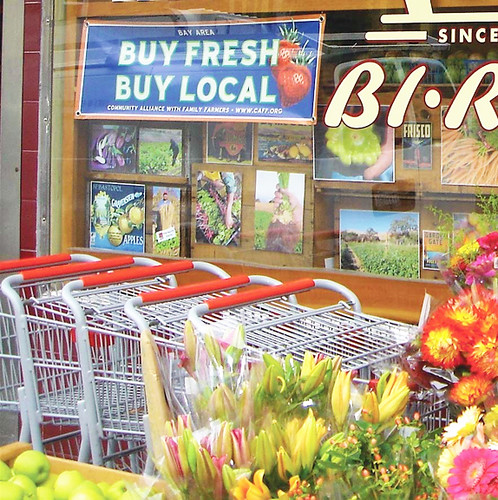
Small and mid-size farmers are the backbone of farmers markets, but they often face particular obstacles when trying to sell products in markets like grocery stores, restaurants, hospitals, and schools. Through the Transportation and Marketing program at USDA’s Agricultural Marketing Service (AMS), we explored this issue in our recent study, Moving Food Along the Value Chain: Innovations in Regional Food Distribution.
The study included eight food organizations that are overcoming the infrastructure and logistics challenges that smaller producers face. The in-depth interviews, research, and thorough analysis contained in this report focus on four themes: timely infrastructure investments, how stand-out products are complemented by effective marketing, the benefits of an informal network, and the need for strategic partnerships.
For the first theme, we found that businesses are more successful when their investments match their growth. For example, during their early business development, the Oklahoma Food Cooperative decided to use a church basement as a warehouse and focus on developing their unique online ordering platform and farmer-customer communication. As the business matured, they eventually leased a proper warehouse to manage the co-op. Their innovative online marketing platform, designed to address their needs, has been successfully adapted by businesses around the country with similar communication challenges.
Red Tomato, a non-profit based in Boston, demonstrated the second theme—the need for producers to create products that will stand out in the marketplace with the help of effective marketing. This can include developing products that appeal to regional consumer preferences and values. One of Red Tomato’s signature brands is Eco Apple™. Red Tomato works carefully with apple producers to make sure that Eco Apple™ apples are grown according to specific environmental standards favored by local consumers. By meeting those standards, Red Tomato can help market Eco Apple™ to get a better price for the farmer.
We also found that producers could benefit when participating in an informal network. Members in the network can band together to help each other meet the constantly shifting demands of diversified food markets. Virginia’s Appalachian Sustainable Development was able to effectively organize a regional network of small and mid-sized farmers to produce local organic foods for specialty stores and regional grocery store chains.

The final theme is the need for businesses to build strategic partnerships that leverage their strengths. Businesses need to identify what they’re good at, as well as what they’re not so good at, and then get help from the right people. In California, Growers Collaborative, a nonprofit-managed network of farmers committed to local food production, quickly discovered that their strength was in training and marketing, not in distribution and logistics. By forming a strategic partnership with an existing specialty produce distributor, Growers Collaborative could concentrate on the things they knew how to do well, and do them even better.
Our research and the resulting study shows how flexible distribution models can be financially sustainable enterprises, meet the rapidly changing demands of consumers, and bring higher returns to producers. By analyzing what has and has not worked within these eight successful businesses, Moving Food Along the Value Chain: Innovations in Regional Food Distribution, provides lessons to build on, blunders to avoid, and inspiration to draw from.
Visit our website for more information on food hubs and distribution models.
